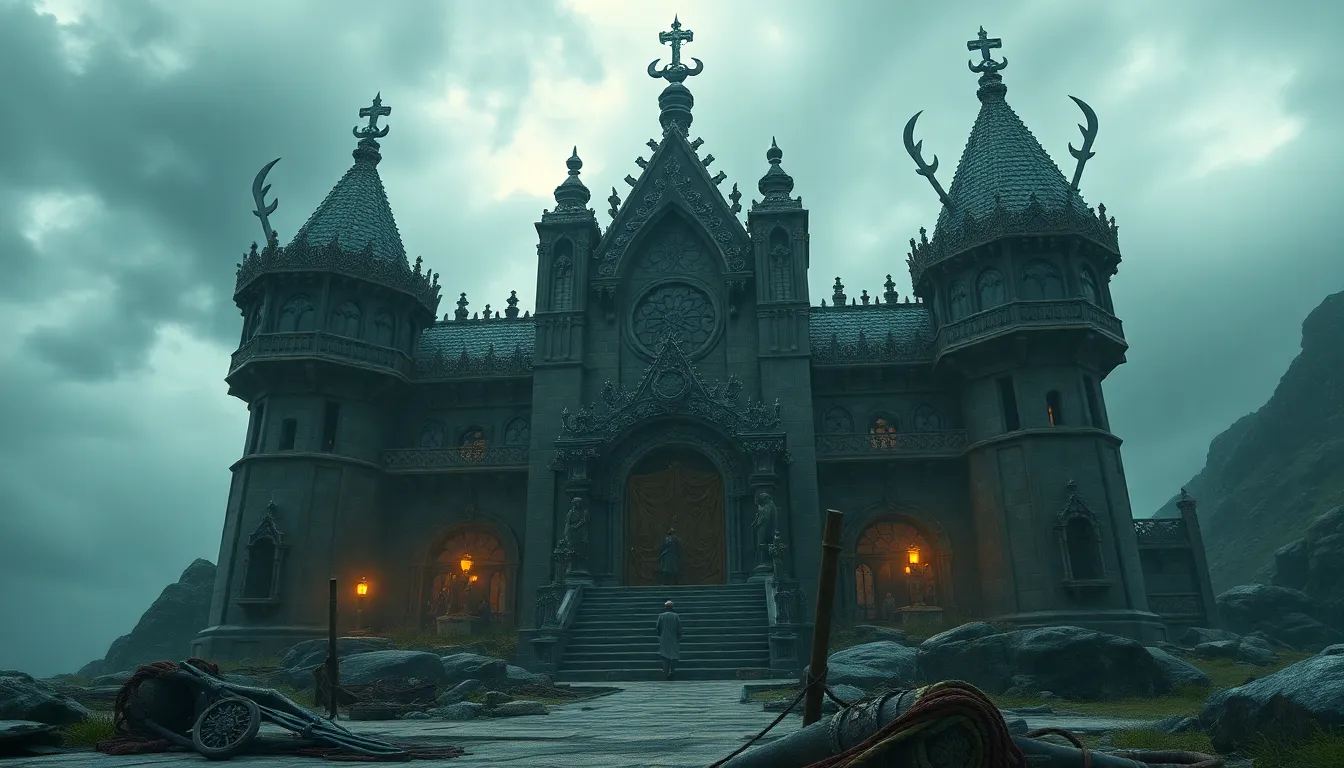The Kingdom of the Witches: Myths of Magic and Mystery
Introduction to the Kingdom of the Witches
The fascination with witches is a phenomenon that transcends cultures and epochs. From ancient folklore to modern witchcraft, these enigmatic figures have captivated the human imagination. Witches often embody a duality: on one hand, they are seen as figures of fear, associated with malevolence and dark magic; on the other, they represent empowerment, embodying strength, wisdom, and the ability to challenge societal norms.
Historical Context: Witches Through the Ages
The concept of witchcraft has deep historical roots. In ancient civilizations, beliefs and practices surrounding witchcraft were often intertwined with spirituality and the natural world. Early witches were frequently viewed as healers or wise women who harnessed natural forces for good. However, as societies progressed, the perception of witches began to evolve.
- Ancient Beliefs: In cultures such as Ancient Egypt and Mesopotamia, witchcraft was linked to rituals and deities.
- Middle Ages: The rise of Christianity led to the demonization of witchcraft, portraying witches as servants of the devil.
- Enlightenment: Scientific reasoning began to challenge witchcraft beliefs, but the stereotype of the witch persisted.
Cultural Variations of Witchcraft
Witchcraft is not a monolithic concept; it varies significantly across cultures. The Western depiction of witches often leans towards the dark and sinister, while Eastern views may embody a more holistic approach to magic.
- Western Depictions: In Europe and North America, witches are typically portrayed with pointed hats, cauldrons, and dark spells.
- Eastern Traditions: In cultures like Japan and India, witches may be seen as protectors or possessors of healing powers.
- Indigenous Practices: Many indigenous cultures view witchcraft as a sacred practice that connects individuals to their ancestors and the earth.
The Role of Witches in Folklore and Literature
Witches have played significant roles in literature and folklore, often serving as symbols or catalysts for deeper themes.
- Shakespeare’s Macbeth: The three witches in Macbeth symbolize fate and ambition, influencing the protagonist’s descent into darkness.
- The Witch of Endor: A biblical figure who conjured the spirit of Samuel, she highlights the complex relationship between the sacred and the forbidden.
- Fairy Tales: Witches in tales like Hansel and Gretel often represent danger but also embody the wisdom of the wild.
The Symbolism of Magic: Tools and Rituals
Magic is often represented through specific symbols and rituals, which vary widely among different traditions of witchcraft.
- Common Symbols:
- Cauldrons: Often associated with transformation and brewing potions.
- Wands: Used to channel energy and intention.
- Crystals: Believed to hold healing properties and amplify energy.
- Rituals: Various practices, including spellcasting, herbalism, and meditation, serve to connect practitioners with the spiritual realm.
The Witch Hunts: Fear, Power, and Paranoia
The witch hunts of the past represent a dark chapter in history, where fear and paranoia led to the persecution of countless individuals, predominantly women.
- Historical Accounts: The European witch hunts of the 16th and 17th centuries resulted in the execution of tens of thousands of people.
- Societal Impact: These hunts reflected societal fears, often targeting those who defied gender norms or social hierarchies.
Modern Witchcraft: The Rise of Neo-Paganism and Wicca
In contemporary society, there has been a resurgence of interest in witchcraft, particularly through movements like Neo-Paganism and Wicca, which advocate for a return to nature-based spirituality.
- Contemporary Beliefs: Modern witches often embrace a diverse set of beliefs, including reverence for nature, goddess worship, and the use of magic for positive transformation.
- Practices: Common practices include rituals for the full moon, herbal healing, and community gatherings.
Witches in Popular Culture: From Scary to Empowering
The portrayal of witches in popular culture has evolved, reflecting changing societal views on gender and power dynamics.
- Film and Television: From the frightening witches in horror films to the empowering representations in shows like “Charmed” and “Sabrina,” witches are often depicted with complexity.
- Music: Artists often draw on witchcraft themes to express rebellion, empowerment, and individuality.
The Mystique of Witches: Psychological and Sociological Perspectives
The appeal of witchcraft in modern society can be understood through various psychological and sociological lenses.
- Psychological Appeal: Witchcraft offers a sense of control and empowerment in a chaotic world, allowing individuals to explore their identities.
- Sociological Impact: Witches often serve as symbols of resistance against patriarchal structures, empowering marginalized voices and promoting inclusivity.
Conclusion: The Enduring Legacy of the Kingdom of the Witches
The enduring interest in witchcraft and magic speaks to humanity’s quest for understanding and empowerment. As society continues to evolve, witches can serve as potent symbols of resilience and change, challenging norms and inspiring future generations. The kingdom of the witches, with its rich tapestry of myths and mysteries, remains a vital part of our cultural heritage, inviting us to explore the complexities of power, fear, and the human spirit.



